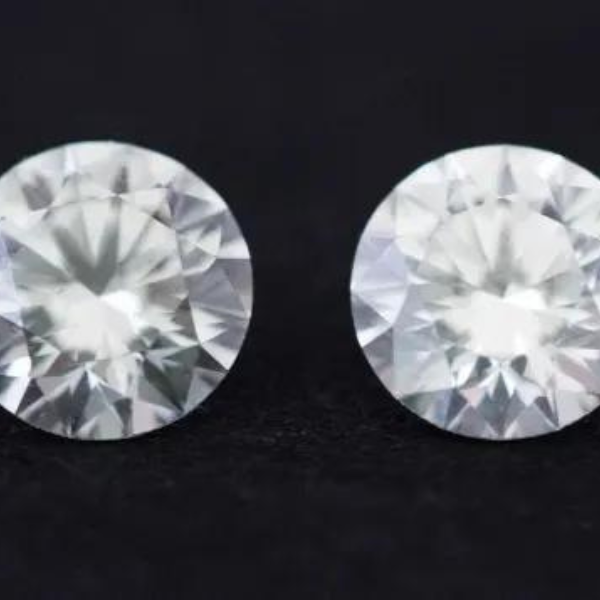
While at a desk in your 5th grade science class a sliver of sunlight comes through the window and is captured by a triangular paperweight on your teacher’s desk. Almost inexplicably, the sunlight is shattered apart and displays its natural colors on the wall. At first glance, all you see is a light pyramid. To comprehend why one color is stretch across a spectrum, requires some science.
This angular sorcery is happening inside of a diamond, too. An experienced cutter takes a rather dull looking rough stone and cuts it just right. Cut it too shallow, and light leaks through the bottom. Cut it too deep, and the light bounces back out the side. When the light escapes the facets, the diamond never gets a chance to showcase a jaw-dropping flash - and that’s what you want to see.
 AGS 000 Ideal Cut Diamond (Left), Fire & Ice Excellent Cut Diamond (Right)
AGS 000 Ideal Cut Diamond (Left), Fire & Ice Excellent Cut Diamond (Right)
When looking at only the 4c's - cut, carat weight and clarity - you’re only getting a portion of the story. Grading systems can tell you specific things about a diamond according to laboratory calculations, but what it cannot tell you is how illuminated a diamond is going to look in real life.
Take a look at the two diamonds pictured above. On the left, is a one carat AGS 000 ideal cut diamond – one that if you only looked at the numbers would be judged as “perfect” but, in reality, it doesn’t show up as brilliant as the one on the right. The other diamond, on the left, is a one carat Sylvan's Fire & Ice excellent cut diamond which was designed to reflect more light back to the top than any other diamond in the industry. In every way, the AGS 000 has higher marks than the Fire & Ice but it doesn’t appear that way to the naked eye because the cut of the AGS 000 allows too much light to escape before returning to the top.
 AGSL Computer Generated Light Performance Map (AGS 000 on the left, Fire & Ice on the right). The red represents the brightness of the diamond.
AGSL Computer Generated Light Performance Map (AGS 000 on the left, Fire & Ice on the right). The red represents the brightness of the diamond.
A smaller, well cut diamond can act like a light show on your finger. A large, poorly cut diamond will just sit there looking humdrum. The most important qualification a diamond can have is the one that comes from your own two eyes. Don't be mistaken, our diamonds get high technical marks from the AGS and we’ll proudly show you all the documentation you want.
But, the radiance of a diamond comes from the way the artist shapes it - adjusting angles by hand. But, when it’s ready for you (or her!), all it takes is the twinkle from a candle to see from 10 tables away.
You are always the final judge to decide if the diamond will have the distinction of resting on your finger. Just remember that a diamond is something to see face to stone, something to be graded by your heartbeat, with or without a microscope.
Shop our Fire & Ice diamonds and enjoy expanded designer collections of fine jewelry, engagement rings and wedding bands for him and her.


